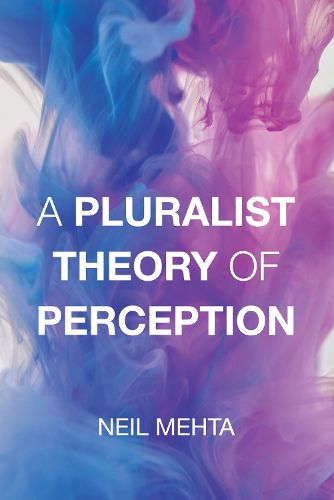Readings Newsletter
Become a Readings Member to make your shopping experience even easier.
Sign in or sign up for free!
You’re not far away from qualifying for FREE standard shipping within Australia
You’ve qualified for FREE standard shipping within Australia
The cart is loading…






A new theory of perception that posits that conscious perception consists not of a single kind of awareness, but of two radically different kinds deployed in concert.
A new theory of perception that posits that conscious perception consists not of a single kind of awareness, but of two radically different kinds deployed in concert.
Most contemporary theories of perception, including leading forms of representationalism and naive realism, are monistic- they assume that to consciously perceive is to deploy only one kind of sensory awareness. In A Pluralist Theory of Perception, Neil Mehta instead argues for pluralism, which says that to consciously perceive is to deploy two very different kinds of sensory awareness in concert. Mehta argues that pluralism can simultaneously explain what is common to all forms of consciousness and what is distinctive about conscious perception.
Mehta's preferred version of pluralism, which he calls rich pluralism, says that conscious perception is constituted by successful sensory representation and deep awareness. Successful sensory representation is a representational form of awareness whose targets include particulars. It is found in perceptions, whether conscious or unconscious, but not in hallucinations. By contrast, deep awareness is a nonrepresentational form of sensory awareness whose targets are certain universals-the sensory qualities. Deep awareness constitutes one kind of consciousness, it is common to conscious perceptions and hallucinations, and it reveals part of the essences of its targets. Mehta argues that although rich pluralism appears to be less parsimonious than monism, it is not. All monistic theories that are explanatorily adequate end up being even more complex than rich pluralism. Thus, rich pluralism is the most spartan theory that can shoulder the explanatory load.
$9.00 standard shipping within Australia
FREE standard shipping within Australia for orders over $100.00
Express & International shipping calculated at checkout
Stock availability can be subject to change without notice. We recommend calling the shop or contacting our online team to check availability of low stock items. Please see our Shopping Online page for more details.
A new theory of perception that posits that conscious perception consists not of a single kind of awareness, but of two radically different kinds deployed in concert.
A new theory of perception that posits that conscious perception consists not of a single kind of awareness, but of two radically different kinds deployed in concert.
Most contemporary theories of perception, including leading forms of representationalism and naive realism, are monistic- they assume that to consciously perceive is to deploy only one kind of sensory awareness. In A Pluralist Theory of Perception, Neil Mehta instead argues for pluralism, which says that to consciously perceive is to deploy two very different kinds of sensory awareness in concert. Mehta argues that pluralism can simultaneously explain what is common to all forms of consciousness and what is distinctive about conscious perception.
Mehta's preferred version of pluralism, which he calls rich pluralism, says that conscious perception is constituted by successful sensory representation and deep awareness. Successful sensory representation is a representational form of awareness whose targets include particulars. It is found in perceptions, whether conscious or unconscious, but not in hallucinations. By contrast, deep awareness is a nonrepresentational form of sensory awareness whose targets are certain universals-the sensory qualities. Deep awareness constitutes one kind of consciousness, it is common to conscious perceptions and hallucinations, and it reveals part of the essences of its targets. Mehta argues that although rich pluralism appears to be less parsimonious than monism, it is not. All monistic theories that are explanatorily adequate end up being even more complex than rich pluralism. Thus, rich pluralism is the most spartan theory that can shoulder the explanatory load.